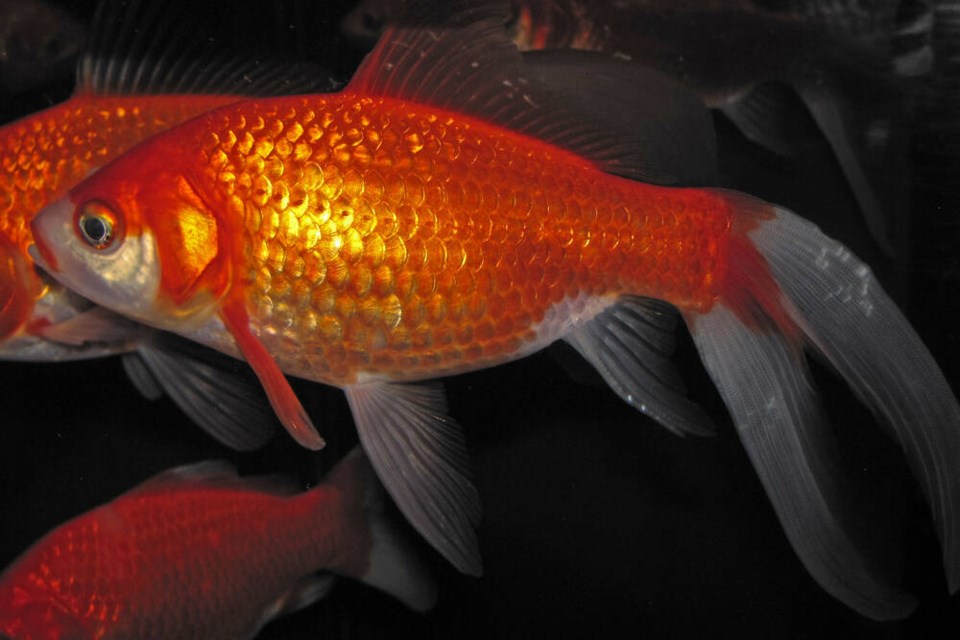Campbell River is trying to get ahead of a goldfish invasion in a stormwater collection pond.
Steve Roehr, operations manager of public utilities, said about 40 fish were captured last fall in Erickson Pond, but many more may be lurking — and growing — in the depths.
“They can get as big as footballs, I hear, and they can do a lot of damage to ecosystems,” Roehr said Tuesday. “They also like to wallow in the mud like little piggies and be very disruptive.”
The Erickson Stormwater Pond, located in a residential area off Erickson Road, is intended to collect rainwater during periods when inflows are high so it can be screened before being released into the environment.
Roehr said the pond is connected to the Willow Creek Watershed, which means any impacts to the pond also affect the watershed.
Goldfish are often illegally dumped in water bodies by people who want to get rid of them and don’t want to flush them down the toilet. Experts say neither is a good idea, and the fish should be composted or put in the garbage.
Brian Heise, an associate professor in the department of natural resource sciences at Thompson Rivers University, said female goldfish can release 50,000 eggs at a time, three times a summer.
And they don’t even need a male to reproduce. “They have a special process called gynogenesis in which the female will get the sperm from a different kind of minnow … to start the eggs developing, even though they’re not fertilized,” Heise said.
“And so she produces clones of herself. So, they’re very good at spreading rapidly.”
The goldfish compete with native species for food and space, and carry parasites and diseases that can spread to other fish, including the salmon population, Heise said.
Last year, the city used biologists to capture and destroy goldfish by using electrofishing techniques, Roehr said. Biologists with battery packs use wands in the water, spreading a current that attracts the fish for netting.
Roehr said this summer, when the pond is low, the city plans to pump it out in an attempt to eradicate the fish.
It will also address invasive plants like yellow irises around the pond. Both of these invasive species have been introduced by people, and pose a threat to native species, he said.
“While Erickson Pond is one example of the risks posed by invasive species in our community, these challenges are present in all natural areas,” said Roehr. “These species should never be disposed of in natural environments, and we want to help the public understand why, so that we can maintain healthy ecosystems in our community.”
A Not for the Wild campaign is aimed at raising awareness of the risks and costs of releasing invasive species into the environment.
The Invasive Species Council of B.C. said goldfish are one of the most widespread invasive fish in North America, with infestations in several lakes in B.C. A member of the carp family, they are native to Asia, and thrive in brackish streams, ponds and lakes with aquatic vegetation.
Goldfish are tolerant of low oxygen conditions and can survive water temperatures from 0 to 41 C. They are omnivores, and feed on a variety of crustaceans, insects, smaller fish and vegetation.
Goldfish are designated as a regional containment control species on the provincial priority invasive species list.
— with files from The Canadian Press



